Count down: London gears up for the Design Museum opening next week
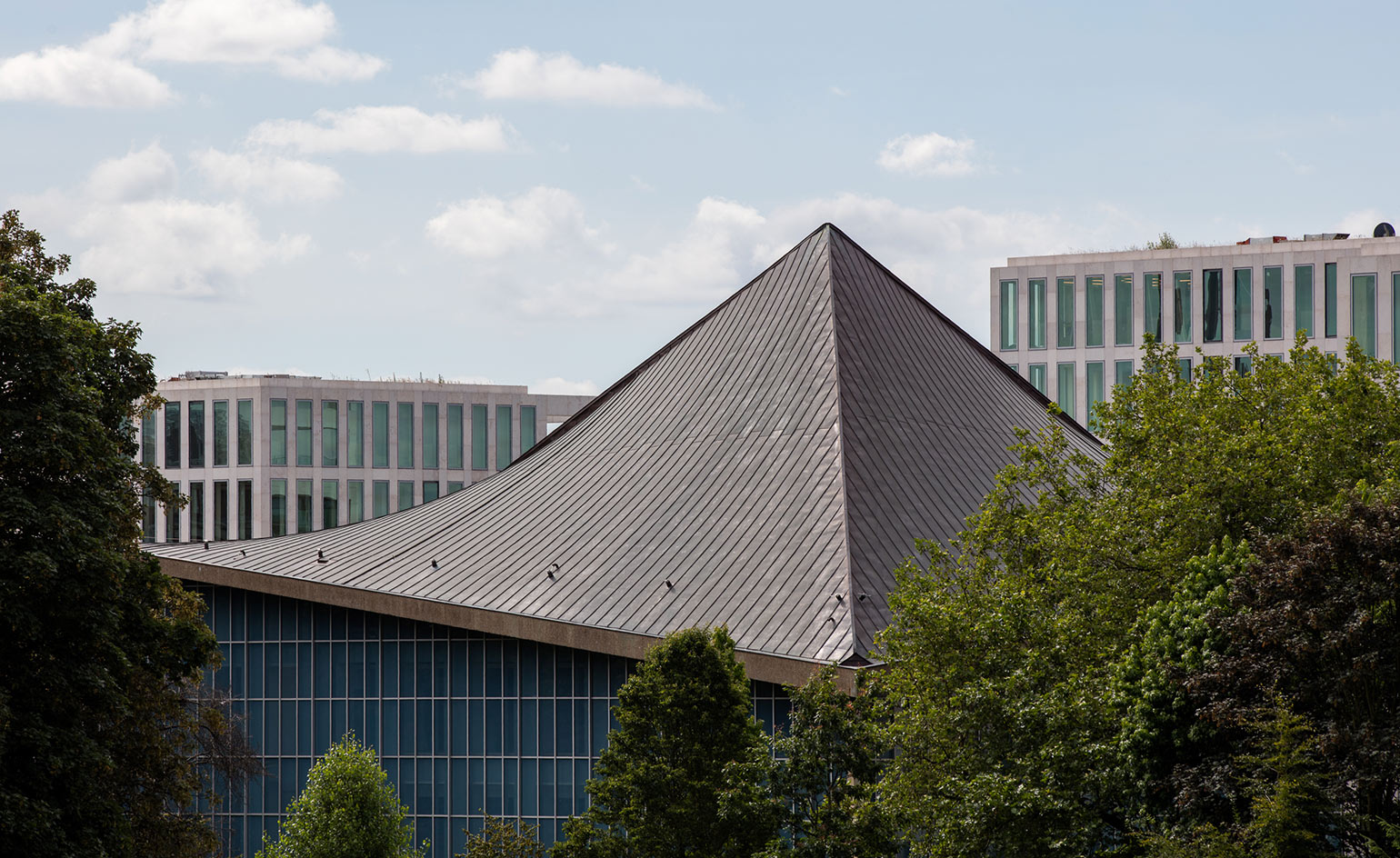
John Pawson’s design for the newly relocated Design Museum in London will allow it to step up as an international centre for culture and education. The plan has tripled the gallery space, placing it in closer proximity to London’s leading museums, and fundraising has now enabled it to open up its collections for free.
The sweeping pavilion roof – preserved from the original 1960 Grade II listed Commonwealth Institute with the structural expertise of OMA – symbolises its status as an architectural monument to design.
Original concrete floors were removed with radical engineering techniques directed by OMA, Allies and Morrison and Arup, in order to preserve the iconic roof and restructure the buildings into a contemporary design of sweeping simplicity. OMA’s Reinier de Graaf described how they began working on the structure before it had a purpose or owner; when the Design Museum claimed it, ‘a refurbishment became a conversion on to ever more radical degrees’.
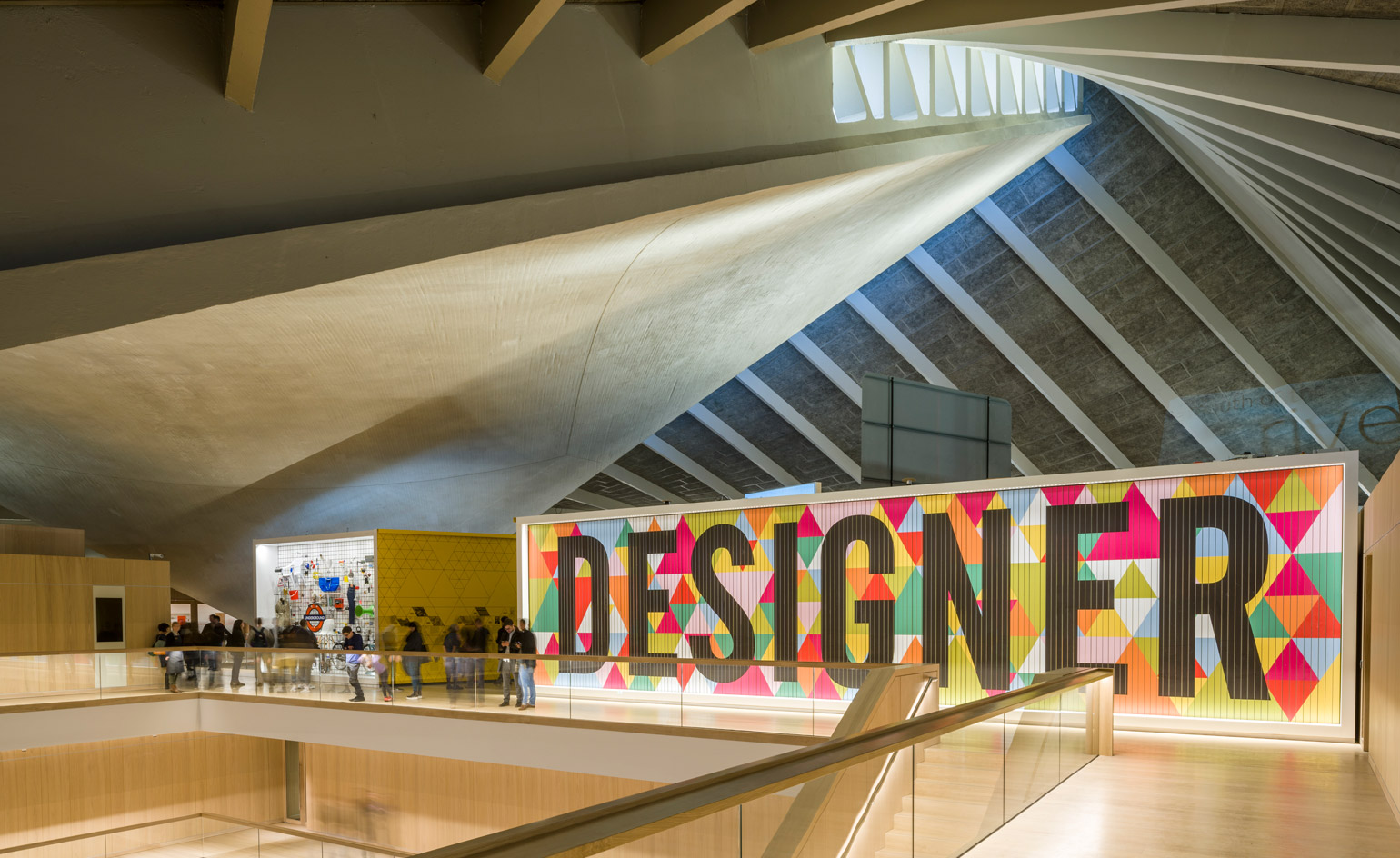
The Design Museum's oak-lined atrium. Photography: Gareth Gardner
Pawson then carved the 10,000 sq m space up, making way for a colossal operation of a vast atrium with stepped seating, a permanent gallery, two temporary gallery spaces, a restaurant, auditorium, studios, library, archive, shop and new learning facilities.
The permanent collection – curated into an exhibition titled ‘Designer/Maker/User’ – sits just beneath the roof on the top floor, allowing visitors to see the impressive structure up close as they curve through the energetic exhibition design by Studio Myerscough. By contrast, the gallery at -2 has high ceilings, open space and low display tables, showing the significant effect of architecture on exhibition display and visitor experience.
Pawson’s first major public work displays attentiveness to a purely human recognition of spatial immersion – an absolute requirement for a museum – through the wide atrium, which is combined with a lightness felt in the smooth oak stair and the softly dynamic spiral of the paraboloid roof.
‘Design is about optimism,’ says Sir Terence Conran, who founded the Design Museum in 1983. ‘It’s clean, fresh, well lit, friendly and full of surprises,’ he adds of the design, 'a dream that has been a long time materialising’ and the most important moment of his design career.
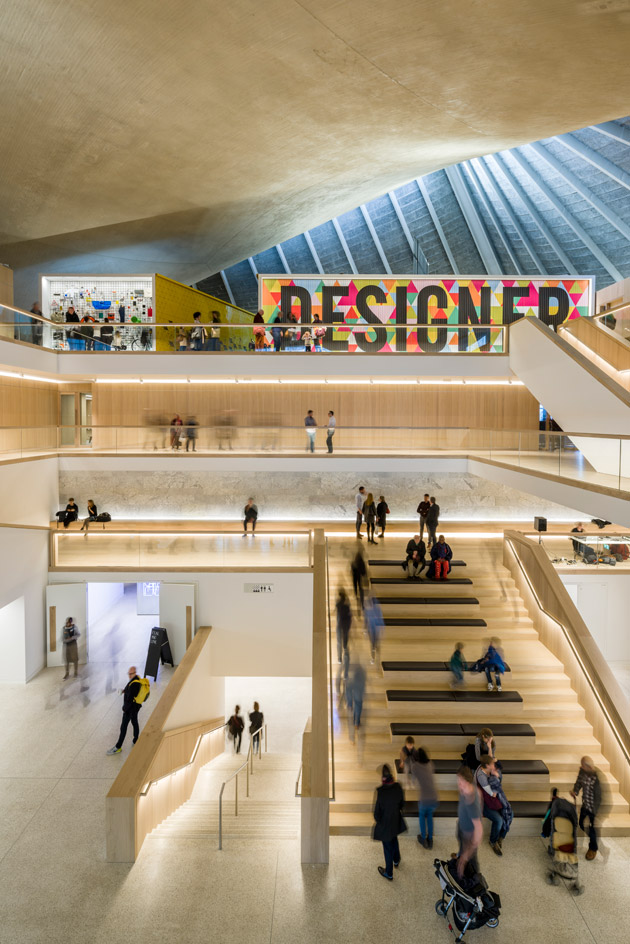
Inside, the hyperbolic paraboloid roof is a focal point throughout the space.
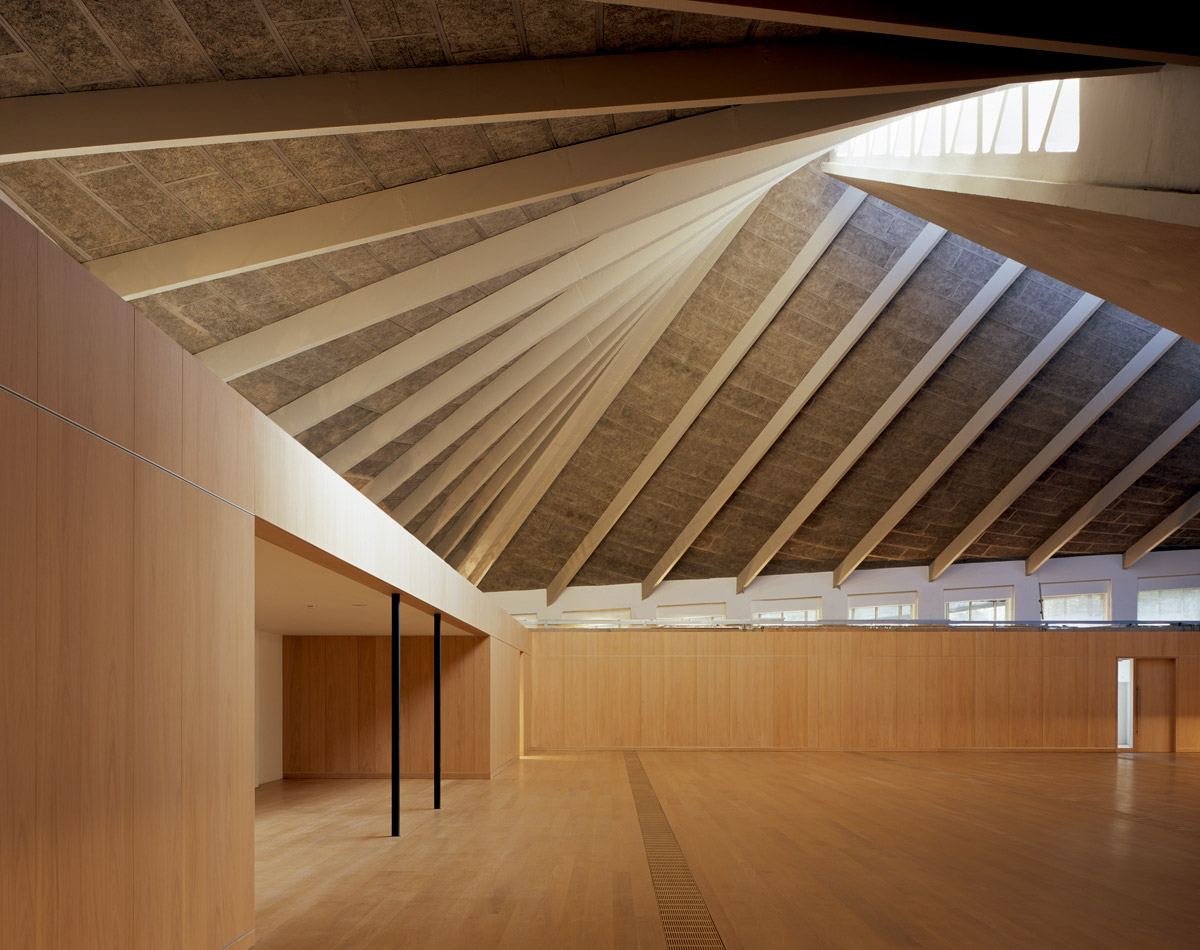
Warm oak panelling brings a calming feel to the interiors.
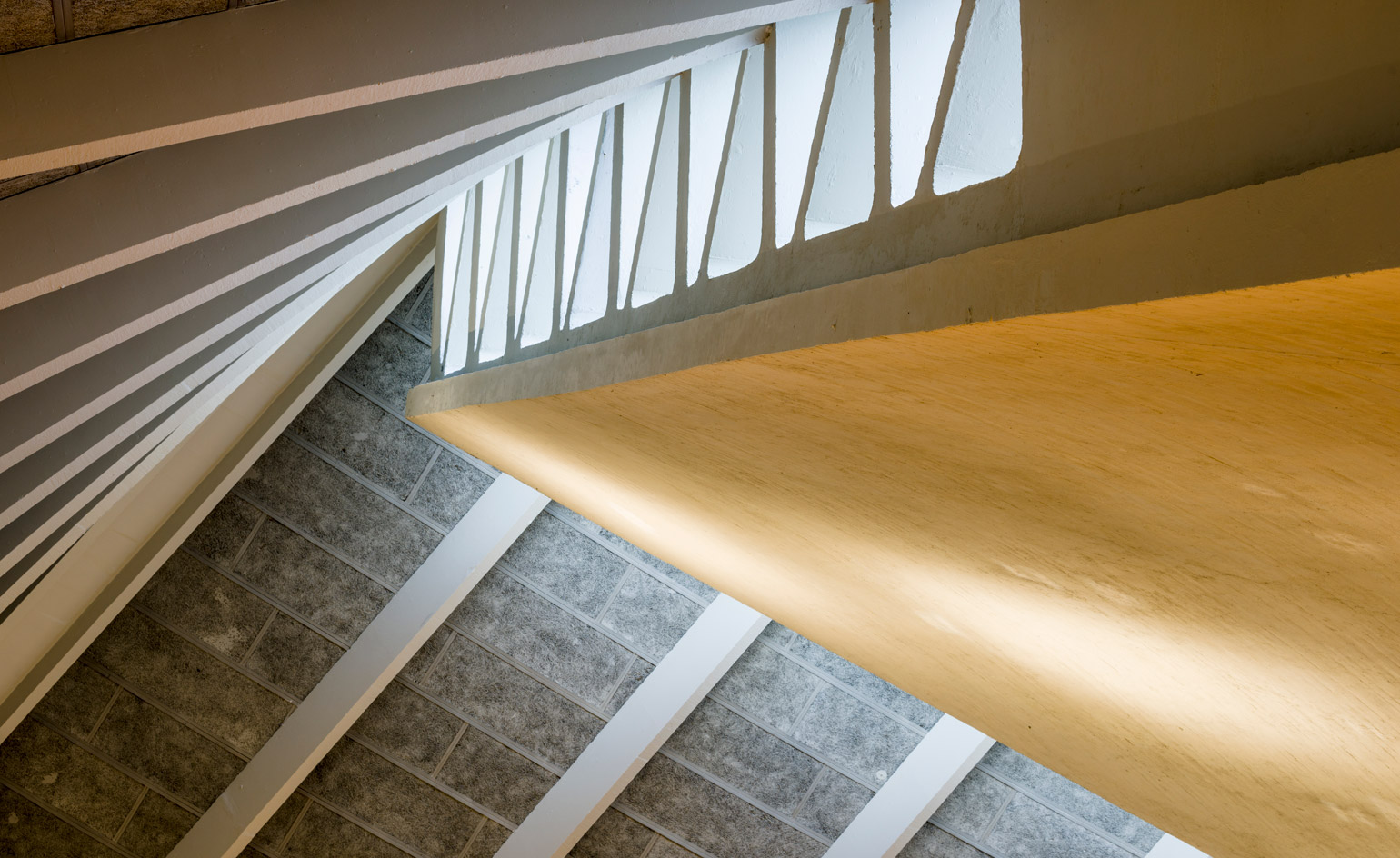
The roof was renovated and restructured by OMA.

The original facade has been rebuilt with double glazed glass
INFORMATION
For more information, visit the Design Museum website
ADDRESS
Design Museum
224–238 Kensington High Street
London W8 6AG
Receive our daily digest of inspiration, escapism and design stories from around the world direct to your inbox.
Harriet Thorpe is a writer, journalist and editor covering architecture, design and culture, with particular interest in sustainability, 20th-century architecture and community. After studying History of Art at the School of Oriental and African Studies (SOAS) and Journalism at City University in London, she developed her interest in architecture working at Wallpaper* magazine and today contributes to Wallpaper*, The World of Interiors and Icon magazine, amongst other titles. She is author of The Sustainable City (2022, Hoxton Mini Press), a book about sustainable architecture in London, and the Modern Cambridge Map (2023, Blue Crow Media), a map of 20th-century architecture in Cambridge, the city where she grew up.
-
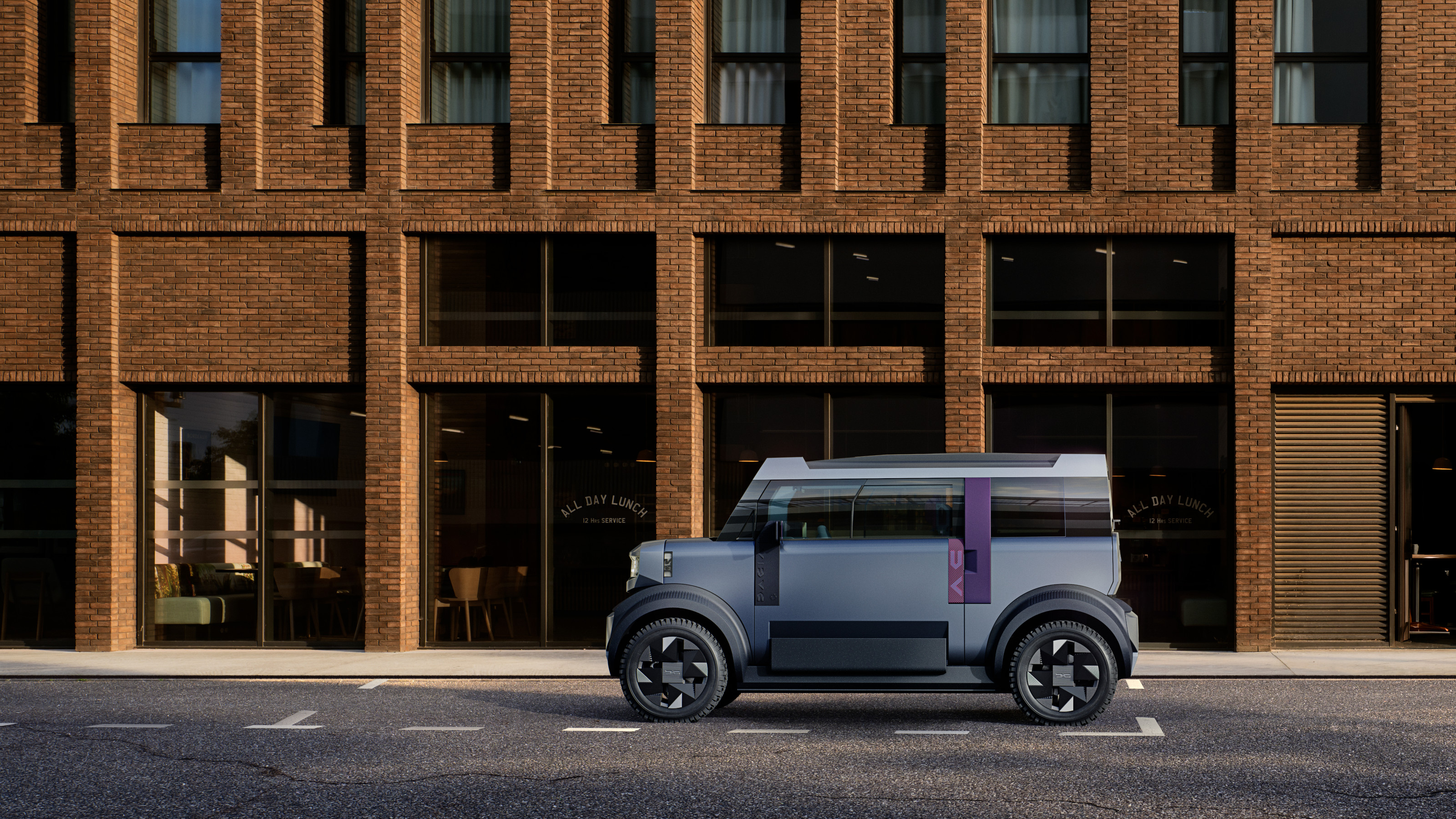 Year in review: the shape of mobility to come in our list of the top 10 concept cars of 2025
Year in review: the shape of mobility to come in our list of the top 10 concept cars of 2025Concept cars remain hugely popular ways to stoke interest in innovation and future forms. Here are our ten best conceptual visions from 2025
-
 These Guadalajara architects mix modernism with traditional local materials and craft
These Guadalajara architects mix modernism with traditional local materials and craftGuadalajara architects Laura Barba and Luis Aurelio of Barbapiña Arquitectos design drawing on the past to imagine the future
-
 Robert Therrien's largest-ever museum show in Los Angeles is enduringly appealing
Robert Therrien's largest-ever museum show in Los Angeles is enduringly appealing'This is a Story' at The Broad unites 120 of Robert Therrien's sculptures, paintings and works on paper
-
 Arbour House is a north London home that lies low but punches high
Arbour House is a north London home that lies low but punches highArbour House by Andrei Saltykov is a low-lying Crouch End home with a striking roof structure that sets it apart
-
 A former agricultural building is transformed into a minimal rural home by Bindloss Dawes
A former agricultural building is transformed into a minimal rural home by Bindloss DawesZero-carbon design meets adaptive re-use in the Tractor Shed, a stripped-back house in a country village by Somerset architects Bindloss Dawes
-
 RIBA House of the Year 2025 is a ‘rare mixture of sensitivity and boldness’
RIBA House of the Year 2025 is a ‘rare mixture of sensitivity and boldness’Topping the list of seven shortlisted homes, Izat Arundell’s Hebridean self-build – named Caochan na Creige – is announced as the RIBA House of the Year 2025
-
 In addition to brutalist buildings, Alison Smithson designed some of the most creative Christmas cards we've seen
In addition to brutalist buildings, Alison Smithson designed some of the most creative Christmas cards we've seenThe architect’s collection of season’s greetings is on show at the Roca London Gallery, just in time for the holidays
-
 In South Wales, a remote coastal farmhouse flaunts its modern revamp, primed for hosting
In South Wales, a remote coastal farmhouse flaunts its modern revamp, primed for hostingA farmhouse perched on the Gower Peninsula, Delfyd Farm reveals its ground-floor refresh by architecture studio Rural Office, which created a cosy home with breathtaking views
-
 A revived public space in Aberdeen is named Scotland’s building of the year
A revived public space in Aberdeen is named Scotland’s building of the yearAberdeen's Union Terrace Gardens by Stallan-Brand Architecture + Design and LDA Design wins the 2025 Andrew Doolan Best Building in Scotland Award
-
 The Architecture Edit: Wallpaper’s houses of the month
The Architecture Edit: Wallpaper’s houses of the monthFrom wineries-turned-music studios to fire-resistant holiday homes, these are the properties that have most impressed the Wallpaper* editors this month
-
 A refreshed 1950s apartment in East London allows for moments of discovery
A refreshed 1950s apartment in East London allows for moments of discoveryWith this 1950s apartment redesign, London-based architects Studio Naama wanted to create a residence which reflects the fun and individual nature of the clients